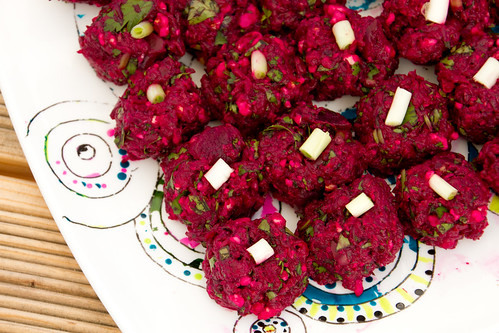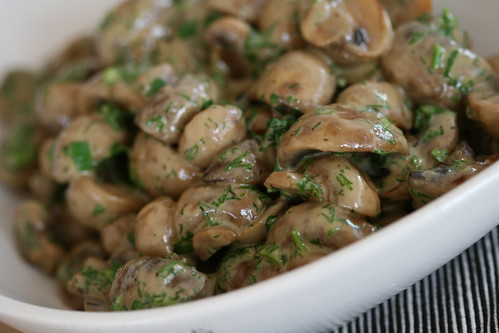
Badrijani is the Georgian rolled eggplant dish we've been missing our whole life, wrote Lucky Peach on its Facebook page yesterday. I don't really know about rolled eggplant/rolled aubergine dishes in particular, but as far as eggplant dishes in general go, Georgian rolled aubergines are pretty wonderful. They're pictured on the top left corner above.
My recipe is pretty minimalist, as far as the seasoning goes. I've served them as part of a bigger Georgian spread (see f. ex. here), where the famous Georgian spice blend khmeli-suneli was used in various dishes. That's why I like my badrijani nigvzit (badrijani = aubergine/eggplant, nigvzit = walnuts) seasoned just with herbs, onion and vinegar. But feel free to use garlic instead of onion and to add some ground coriander or cumin seeds - or a generous spoonful of khmeli-suneli - to the walnut mixture to make it more flavoursome. Even chilli powder could be added, if you're fond of spicy dishes.
This great appetizer is low-carb, LCHF (low carb, high fat), gluten-free, vegan, Paleo etc. For more Georgian recipes, see my Georgian Flickr album or browse my Georgian recipes here.
Badrijani nigvzit aka Georgian eggplant rolls with walnut paste
(Pähklitäidisega pommurullid e. badrižani)
Serves 6 as an appetizer
2 slender eggplants/aubergines
sea salt
olive oil
Walnut filling:
250 g walnuts
2 onions
fresh dill, cilantro/coriander and parsley, chopped
3-4 Tbsp red wine vinegar
sea salt and freshly ground black pepper
To garnish:
pomegranate seeds
Cut the aubergines into long thin slices, lengthwise. Sprinkle with salt and let stand in a colander for 20-30 minutes. Drain the liquid, pat the slices dry with kitchen paper.
You can cook the aubergine either by frying or by baking. To fry them, heat some oil on a frying pan and fry on moderate heat until golden on both sides. To bake them, place into a 220C/450F oven and bake for about 20 minutes, turning once.
To make the walnut filling, spread the walnuts on a baking sheet and roast at 180C/350F for about 10 minutes, until they're aromatic and golden. Remove from the oven and let cool.
If you dislike the taste of raw onion, fry the chopped onion in olive oil until translucent.
Place all the filling ingredients into the food processor and blend until coarse and combined. Transfer into a bowl and season to taste - the filling has to be just a wee bit vinegary.
Place a spoonful of the filling onto one end of the aubergine slice, then roll into a cigar (alternatively, spread a thin layer of the walnut paste over the whole length of the aubergine, then roll up). Place onto a serving tray, and do the same with rest of the aubergine slices and the filling. Garnish with pomegranate seeds and fresh herbs.
More aubergine/eggplant recipes on Nami-Nami:
Grilled aubergine with feta, golden raisins and mint
Armenian aubergine stew
Ottolenghi's roasted aubergine with saffron yoghurt
Nasu dengaku (miso-glazed aubergine)
Aubergine curry with tomatoes, coriander and Nigella seeds
Sautéed aubergine (Melanzane al funghetto)
Israeli roasted aubergine and feta spread
Moussaka, deconstructed
More badrijani recipes on food blogs:
Karen @ Rambling Spoon
Gill @ Gill Stannard
kahviaddikti (recipe in Finnish)
Christina Nichol @ Lucky Peach













